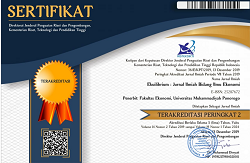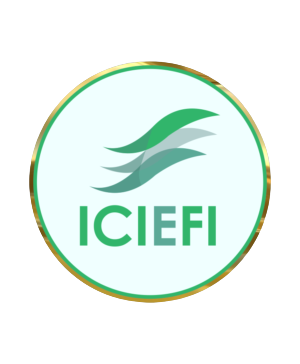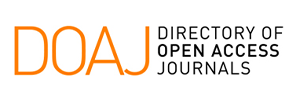The Role of Stakeholders in Sustainable Tourism using Mactor Analysis: Evidence from Kragilan's Top Selfie, Magelang, Indonesia
DOI: 10.24269/ekuilibrium.v17i2.2022.pp102-109
Abstract
Sustainable tourism development has to pay attention to social, economic, and environmental factors, which is essential in supporting the Sustainable Development Goals (SDGs). The key actors' involvement in tourism development determines its success. This study aims to analyze the strength and convergence between stakeholders or actors who play a role and are involved in the development of Top-Selfie in Kragilan, Magelang, Indonesia, especially from the strategic issues of Increasing Income, Expanding Employment, Increasing Tourists, Poverty Reduction, and Maintaining Local Wisdom, Infrastructure Development, and Pine Forest Conservation. In-depth interviews were conducted with seven important actors, namely (1) The Youth, Sports, and Tourism Office, and (2) the Mount. Merbabu National Park, (3) the village government, (4) the Tourism Awareness Group, (5) Visitors, (6) Local Communities, and (7) Business Actors. The result is the Youth, Sports, and Tourism Offices, Mount. Merbabu National Park and tourism awareness groups are the main actors in developing sustainable tourism in Kragilan's Top Selfie.
Keywords
Sustainable tourism stakeholders; Mactor analysis; Top-Selfie; Kragilan, Magelang
References
- Aryawan, Gede, I. Made Sara, and A. A. Sri Purnami. 2019. “The Role of Stakeholders in Agro-Tourism Development with MACTOR Analysis Approach (Case Study in Catur Tourism Village of Bali Province, Indonesia).” International Journal of Economics and Management Studies 6(11):100–106. doi: 10.14445/23939125/ijems-v6i11p111.
- Bendahan, Samuel, Giovanni Camponovo, and Yves Pigneur. 2004. “Multi-Issue Actor Analysis: Tools and Models for Assessing Technology Environments.” Journal of Decision Systems 13(2):223–53. doi: 10.3166/jds.13.223-253.
- Boumaour, Amina, Samir Grimes, Louis Brigand, and Mohamed Larid. 2018. “Integration Process and Stakeholders’ Interactions Analysis around a Protection Project: Case of the National Park of Gouraya, Algeria (South-Western Mediterranean).” Ocean and Coastal Management 153:215–30. doi: 10.1016/j.ocecoaman.2017.12.031.
- BPS. 2021. Tourism Satellite Account Indonesia 2016-2019.
- Ilkhanizadeh, Shiva. 2021. “Sustainable Tourism and the Role of Stakeholders in North Cyprus: A Literature Review.” Worldwide Hospitality and Tourism Themes 13(4):468–75. doi: 10.1108/WHATT-02-2021-0034.
- Jomsri, Pijitra. 2019. “Creative Innovation of Augmented Reality for Promote Sustainable Tourism of Chiang Mai Moat.” Journal of Physics: Conference Series 1335(1). doi: 10.1088/1742-6596/1335/1/012010.
- Longart, Pedro, Eugenia Wickens, Walter Ocaña, and Victor Llugsha. 2017. “A Stakeholder Analysis of a Service Learning Project for Tourism Development in An Ecuadorian Rural Community.” Journal of Hospitality, Leisure, Sport and Tourism Education 20:87–100. doi: 10.1016/j.jhlste.2017.04.002.
- Pelyukh, Oksana, Vasyl Lavnyy, Alessandro Paletto, and David Troxler. 2021. “Stakeholder Analysis in Sustainable Forest Management: An Application in the Yavoriv Region (Ukraine).” Forest Policy and Economics 131:102561. doi: 10.1016/j.forpol.2021.102561.
- Riadh, Harizi. 2022. “Intelligent Tourism System Using Prospective Techniques and the Mactor Methodology: A Case Study of Tunisian Tourism.” Current Issues in Tourism 25(9):1376–98. doi: 10.1080/13683500.2021.1937072.
- Serravalle, Francesca, Alberto Ferraris, Demetris Vrontis, Alkis Thrassou, and Michael Christofi. 2019. “Augmented Reality in the Tourism Industry: A Multi-Stakeholder Analysis of Museums.” Tourism Management Perspectives 32:100549. doi: 10.1016/j.tmp.2019.07.002.
- World Tourism Organization. 2013. Sustainable Tourism for Development Guidebook. First.
Refbacks
- There are currently no refbacks.

This work is licensed under a Creative Commons Attribution-ShareAlike 4.0 International License.













